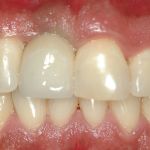Understanding and Preventing Cavities: How to Protect Your Teeth from Tooth Decay
- What Is a Cavity?
- What Causes Cavities?
- Signs and Symptoms of Cavities
- Effective Cavity Prevention Tips
- How to Treat a Cavity
- Conclusion
What Is a Cavity?
A cavity, also known as dental caries, is a hole in the tooth caused by the decay of the tooth’s enamel. This decay is the result of bacteria that feed on sugars from food and drink, producing acids that erode the enamel over time. If left untreated, cavities can lead to more severe dental problems, including infections and tooth loss.
Dental cavities are one of the most common oral health problems worldwide. They can develop in both baby and adult teeth and affect people of all ages. Fortunately, cavities can be prevented and treated with the right oral care habits and dental treatments.
What Causes Cavities?
Cavities are caused by a combination of factors, primarily poor oral hygiene and the consumption of sugary or acidic foods and drinks. Here are the main causes of cavities:
- Bacterial Growth: The mouth naturally contains bacteria, and when these bacteria feed on sugars, they produce acids that break down enamel and lead to cavities.
- Poor Oral Hygiene: If teeth are not brushed and flossed regularly, plaque (a sticky film of bacteria) can build up on the teeth and eventually cause cavities.
- Diet: Diets high in sugar and starches, such as candy, soda, and processed foods, contribute to cavity formation. The bacteria in the mouth thrive on sugar, making it essential to limit sugary snacks and beverages.
- Acidic Drinks: Drinks like soda, fruit juice, and coffee can erode enamel and create an acidic environment in the mouth, making it easier for cavities to form.
Signs and Symptoms of Cavities
While cavities may not cause symptoms in their early stages, they can develop into painful and noticeable problems if left untreated. Here are some common signs and symptoms of cavities:
- Sensitivity to Hot or Cold: A cavity may cause tooth sensitivity, especially when consuming hot or cold foods and drinks.
- Toothache: A persistent toothache, especially when biting down or chewing, is a common sign of a cavity that has progressed deeper into the tooth.
- Visible Holes or Pits in Teeth: As cavities grow, you may notice dark spots, holes, or pits on the surface of your teeth.
- Bad Breath: A buildup of bacteria in the mouth due to cavities can cause persistent bad breath (halitosis).
- Swelling or Bleeding Gums: In advanced cases, cavities can cause the gums around the affected tooth to swell or bleed.
Effective Cavity Prevention Tips
Preventing cavities is easier than treating them. By following some simple yet effective cavity prevention tips, you can keep your teeth healthy and avoid the pain and cost of dental treatments:
- Brush Your Teeth Twice a Day: Use fluoride toothpaste and brush your teeth at least twice a day. Be sure to brush all surfaces of your teeth, including the back molars where cavities often form.
- Floss Daily: Flossing is essential to remove plaque and food particles from between the teeth where toothbrushes can’t reach.
- Limit Sugary Foods and Drinks: Reducing your intake of sugary snacks, sodas, and juices can significantly reduce your risk of cavities. If you do consume sugary foods, be sure to brush your teeth afterward.
- Visit Your Dentist Regularly: Regular dental checkups are essential for early detection and prevention of cavities. Your dentist can provide cleanings, fluoride treatments, and sealants to protect your teeth.
- Drink Plenty of Water: Drinking water, especially fluoridated water, helps wash away food particles and bacteria, reducing the likelihood of cavities.
- Use Fluoride Toothpaste and Mouthwash: Fluoride helps strengthen tooth enamel, making it more resistant to cavities. Make sure to use toothpaste and mouthwash that contain fluoride.
How to Treat a Cavity
If you already have a cavity, treatment is necessary to prevent further damage to your tooth. Here are some common treatments for cavities:
- Fillings: The most common treatment for cavities is a filling. The decayed portion of the tooth is removed, and the space is filled with materials such as composite resin, amalgam, or gold.
- Crowns: If the cavity is large and has weakened the tooth structure, your dentist may recommend a crown to restore the tooth’s function and appearance.
- Root Canals: If the decay reaches the pulp of the tooth, a root canal may be necessary to remove infected tissue and prevent further damage.
- Tooth Extraction: In severe cases, when the tooth cannot be saved, it may need to be extracted to prevent the spread of infection.
Conclusion
Cavities are a common but preventable oral health issue. By practicing good oral hygiene, avoiding sugary foods, and visiting your dentist regularly, you can significantly reduce your risk of developing cavities. If you already have a cavity, prompt treatment is essential to prevent further damage and ensure the long-term health of your teeth.
For more information on cavity prevention and dental care, visit Dentistry Toothtruth. Our team is here to help you maintain a healthy, cavity-free smile.


 Root 66 Endodontics
Root 66 Endodontics TMJ & Sleep Therapy Centre of Oklahoma City
TMJ & Sleep Therapy Centre of Oklahoma City Bruce L Rothschild DDS & Associates PLLC
Bruce L Rothschild DDS & Associates PLLC DentalWorks Louisville
DentalWorks Louisville Torrance Family Dental
Torrance Family Dental Robert S. Radin, DDS
Robert S. Radin, DDS The Importance of Oral Health Education During Pregnancy for a Healthy Pregnancy
The Importance of Oral Health Education During Pregnancy for a Healthy Pregnancy Why Skipping Dental Checkups Can Lead to Bigger Oral Health Problems
Why Skipping Dental Checkups Can Lead to Bigger Oral Health Problems Advantages of Porcelain Dental Restorations
Advantages of Porcelain Dental Restorations Best Tips for Brushing Your Teeth Properly for Healthy Gums: Essential Techniques for Oral Health
Best Tips for Brushing Your Teeth Properly for Healthy Gums: Essential Techniques for Oral Health How Can Diabetes Cause Tooth and Gum Problems? Preventing and Managing Oral Health Issues
How Can Diabetes Cause Tooth and Gum Problems? Preventing and Managing Oral Health Issues Healthy Habits for Promoting Good Oral Health and Hygiene: Tips for a Healthy Smile
Healthy Habits for Promoting Good Oral Health and Hygiene: Tips for a Healthy Smile